The Spotted ground spiders Habronestes and Storena are two genera of spiders in the family Zodariidae.Nyssus coloripes, known commonly in Australia as the orange-legged swift spider, but also as the spotted ground swift spider, the fleet footed spider and the painted swift spider, is a spider belonging to the family Corinnidae. It is found commonly in Australia and New Zealand.The Spotted ground spider (Nyssus coloripes) is a vagrant species that is widely distributed across Australia.
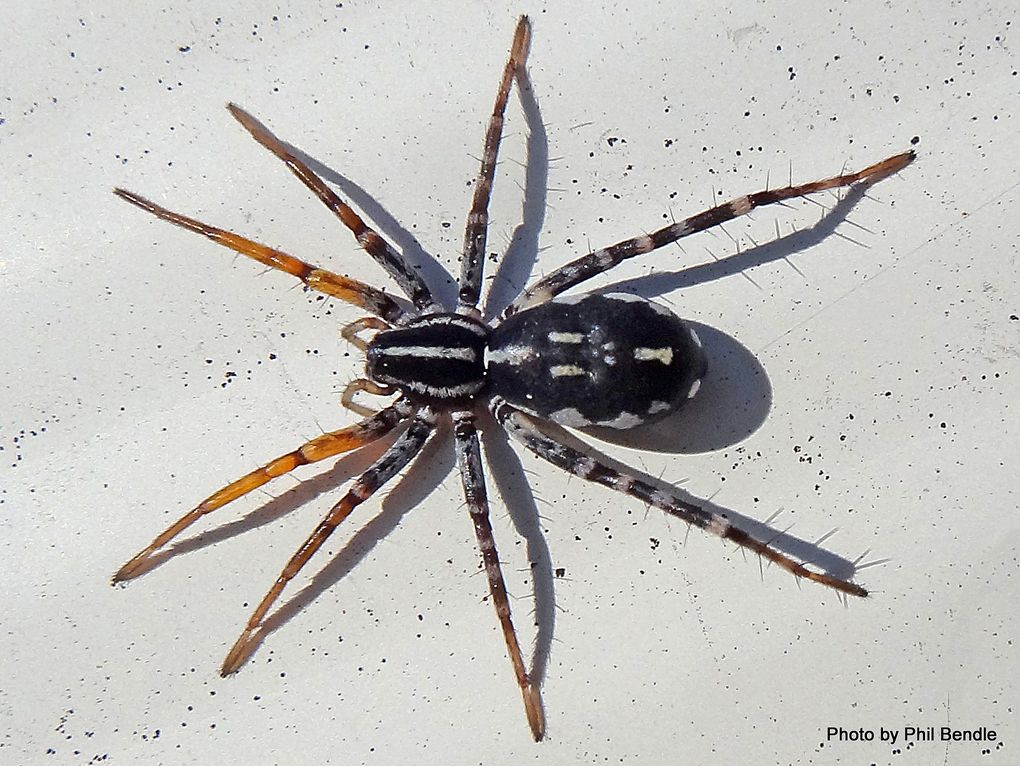
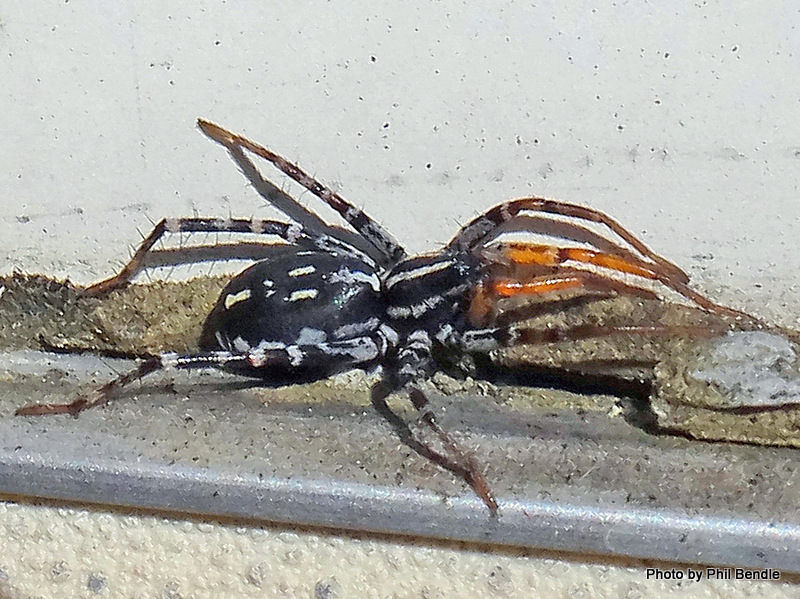
spotted ground spider venomous
The Ground spider is not venomous and is not a serious pest indoors, but if you find numbers are growing, set to work spider-proofing your house.They are not considered dangerous.
Spotted Ground Swift Spider (Nyssus coloripes) was Supunna picta
Kingdom: Animalia
Phylum: Arthropoda
Subphylum: Chelicerata
(unranked): Arachnomorpha
Class: Arachnida
Order: Araneae
Superfamily: Corinnoidea
Family: Corinnidae
Genus: Nyssus
Species: N. coloripes
Binomial name: Nyssus coloripes (name change 2015)
Synonym: Supunna picta
Common name: Spotted Ground Swift Spider, Fleet Footed Spider, Orange legged swift spider. Painted Swift Spider,
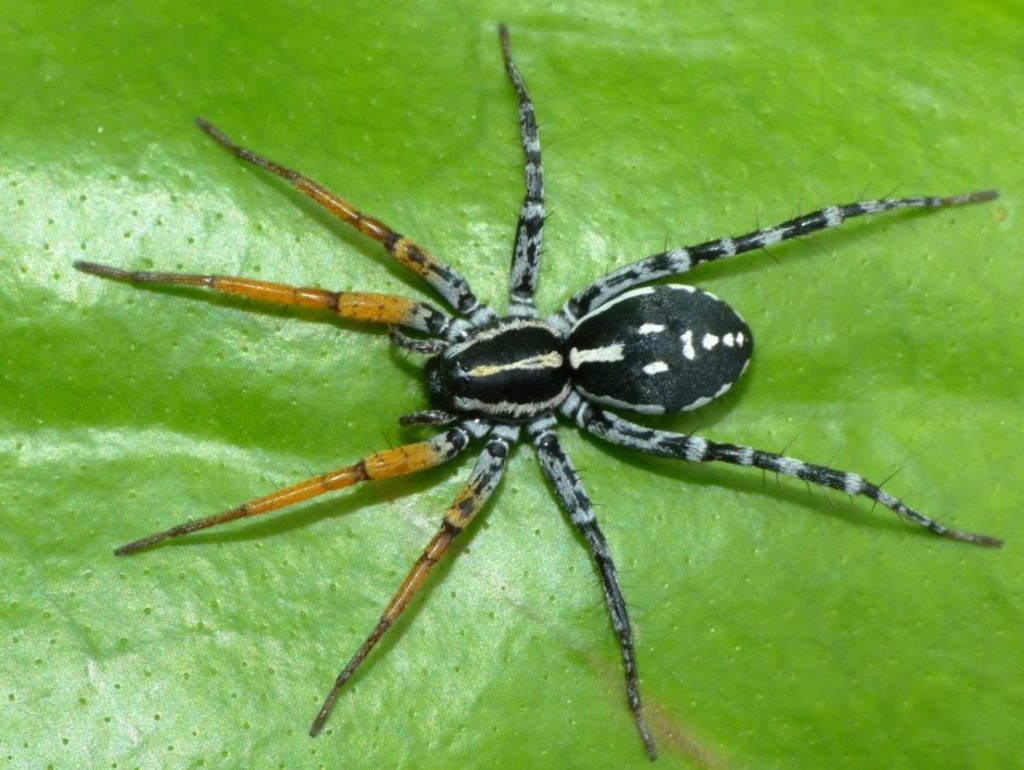
Fleet Footed Spider (Nyssus coloripes) is a small spider with a body length 6-7 mm and is found in Australia and New Zealand. It is often seen hunting on the open ground. It is a hunter and is very swift and hard to catch. It can run vertically up glass.
This spider is identified by its orange front legs and the notable white spots on its back and back legs. It is sometimes walking on three pairs of legs only, waving its front orange legs like an antenna. It is thought it may be mimicking wasps or in Australia, it is mimicking the Gum Tree Shield Bug nymph.
It was first found in New Zealand in 1943 and is now found in gardens and around houses in drier areas. It also occurs in open country where the grass is short.
It builds a retreat with a few strands of silk behind bark or other objects. The females make a flat disk-like egg-sac on a flat surface.
Bites of these spiders and others in the Corinnidae may cause mild local pain, redness and swelling.
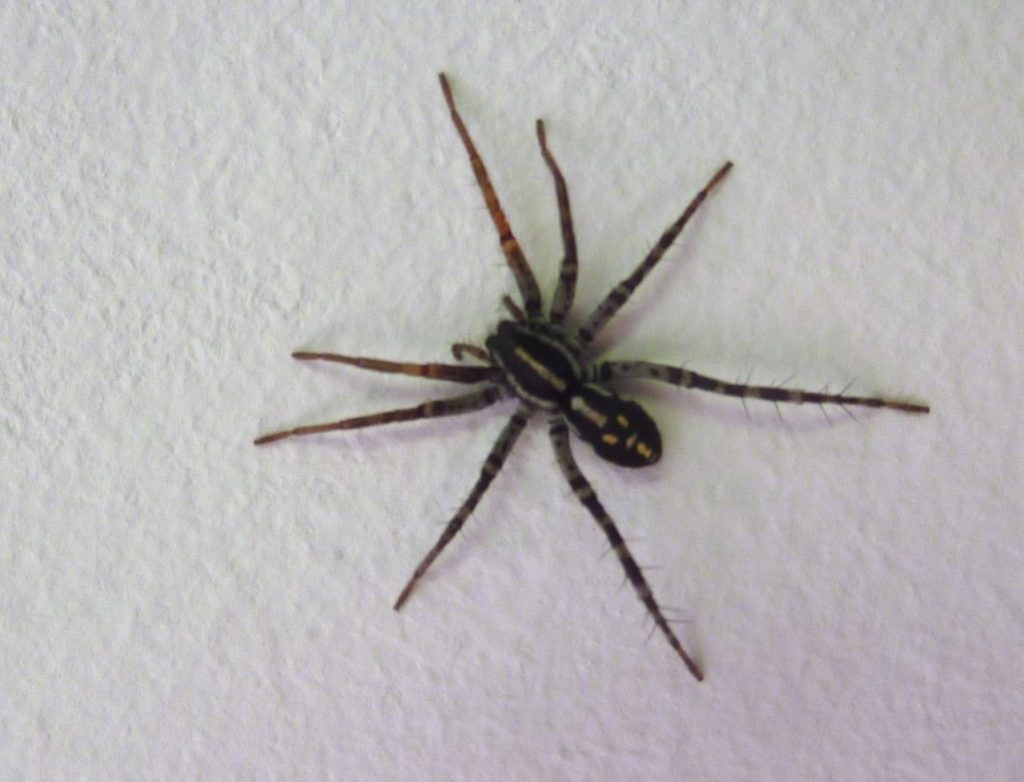
Identification
Spotted ground spiders are from 6 mm to 20 mm long. They are usually dark-coloured (reddish to black), and sparsely haired. Legs are orange to red or black and white. They have two to five pairs of white or coloured spots on the dorsal surface of the abdomen that can range from pale yellow to bright orange. When present, an unpaired spot occurs just above the spinnerets. A characteristic feature of Storena is that they have a pale brown, pitted circle of bare cuticle between the front spots. The eyes are in two back-curved rows of four. One species of Storena is an ant mimic, resembling the red meat ants, Iridomyrmex purpureus. They mingle with the ants in their nest in the early mornings, when the ants are sluggish, and carry off the weaker ants as prey.
Orange-legged swift spiders are mostly black in appearance, with white spots along most of the body and orange front legs. They are typically 6–7 mm in length.
Habitat
Spotted ground spiders don’t build a snare, but hunt and ambush ground dwelling insects. Like many spiders, little is known about their biology. Some species build burrows in the ground or shallow depressions, and build a palisade (fort-like structure) of vertically arranged twigs or leaves around the entrance. Some species, like Habronestes bradleyi, are closely associated with ants.
Male spotted ground spiders are always on the move hunting or searching for females. They can be found:
- In leaf litter
- Under logs or rocks
- Indoors wandering across the floor
Females, on the other hand, are typically found in or near their burrows, which can be built in the ground and have twigs or leaves arranged around the entrance like a palisade.
The Spotted ground spider is a hunting spider that ambushes ground dwelling insects.Females create oval egg sacs that can house roughly 50 eggs.
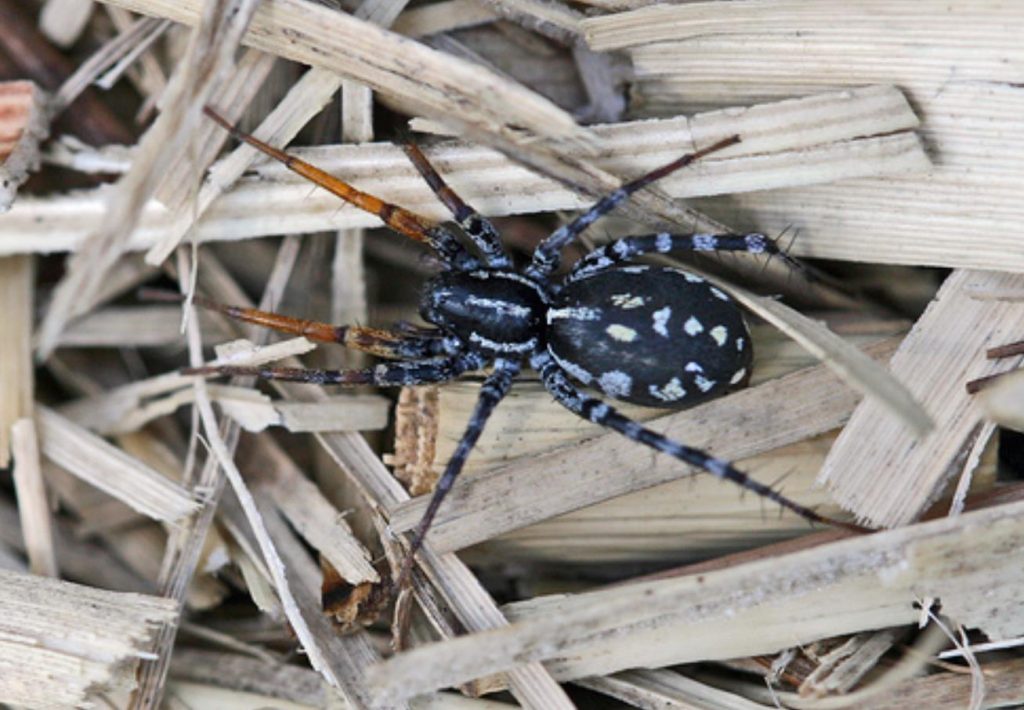
Distribution
These little spiders are unbelievably fast… too fast for their own good. This one was well over 1 metre away when I was taking shots. At one point I took a single step to get another angle but by the time I put my foot back down it had covered the metre heading for nearest shade and got squashed.. sorry. Spotted ground spider size:Original size was about 8mm.
The orange-legged swift spider is native to Australia. It was introduced to New Zealand around 1943 and is fully naturalised.
In New Zealand, it is commonly found inside homes and in short grassland.
Other behaviours and adaptations
Male spotted ground spiders live a vagrant life hunting or searching for females; they may be found in leaf litter, under logs or rocks, or even indoors wandering across the floor. In contrast, the females have rarely been observed far from the burrow. The oval egg sacs have a papery texture, and hold about 50 eggs.
Wandering males frequently enter houses at night, and their bright colours can cause alarm. The males also have characteristic club-shaped palps and can look quite threatening when these are held aloft. Despite the heavy appearance of their fangs, these spiders are reluctant to attack and timid when confronted.
spotted ground spider bite
Few bites by these spiders have been reported and when they have, symptoms have been minor, consisting of a red welt and localised hot feeling for a couple of hours. They are not considered dangerous.
Spotted ground spiders are not considered dangerous to humans, as they are timid in the face of conflict and reluctant to bite.
Likewise, their bites generally only cause mild symptoms like a red welt and localised hot feeling.
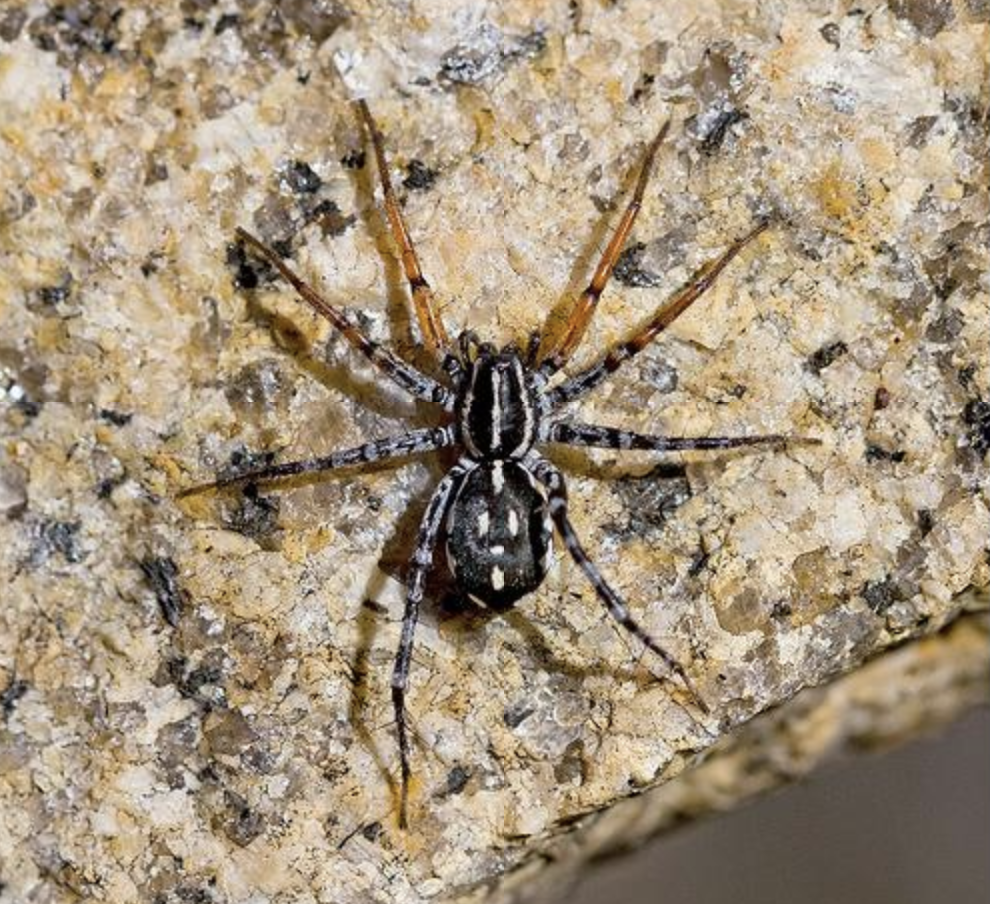
To treat:
- Calm and reassure the casualty
- Apply a cold compress for periods of up to 20 minutes to reduce any swelling or pain
- Monitor for signs of deterioration or an allergic reaction and seek medical advice as necessary
References
Jocqué, R. and Baehr, B. 1992. A Revision of the Australian Spider genus Storena(Araneae, Zodariidae). Invertebr. Taxon., 6: 953-1004.
Jocqué, R. 1995. Notes On Australian Zodariidae (Araneae), I. New Taxa And Key To The Genera. Records of the Australian Museum, 47: 117-140.
Mascord, R. 1980. Spiders of Australia. A.H. & A.W. Reed Pty Ltd, Australia.
Mascord, R. 1993. Australian Spiders in Colour. Reed, Australia.
York Main, B. 1976. Spiders. William Collins Publishers Pty Ltd, Sydney.
